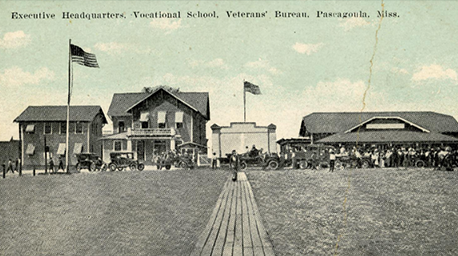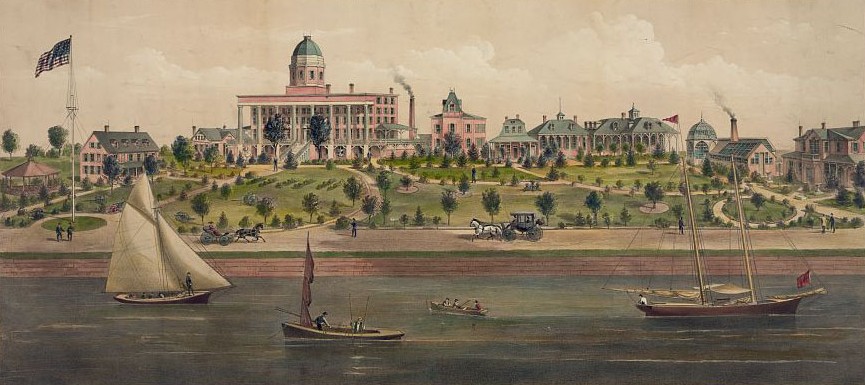The onset of the COVID-19 pandemic in March 2020 transformed ordinary life for most Americans. Workers went home, students were taught remotely, most social activities were cancelled, and the wearing of masks was recommended. As they did a century earlier when the 1918 influenza pandemic killed more than half a million people, authorities nationwide scrambled to adopt preventative measures to keep their communities safe.
Within VA, the National Cemetery Administration (NCA) made the difficult decision to suspend funeral services to protect visitors and staff. More than a year later, Calverton National Cemetery in New York—an early pandemic epicenter—held a special service to make up for what had been missed. On July 8, 2021, the cemetery presented the casket flag (pictured above) during a single solemn ceremony in which 849 Veterans belatedly received military honors.
During an eleven-week span from March 23 to June 8, 2020, committal services were placed on hold throughout the national cemetery system, preventing family, friends, honor guards, and cemetery and mortuary personnel from attending funeral programs. To meet the needs of Greater New York City, Calverton staff performed approximately fifty “direct interments” daily, without family or ceremony. The cemetery, which opened in 1978 at the eastern end of Long Island, is one of VA’s largest at more than 1,000 acres. Before the pandemic, about one hundred funeral services per week were held there.
For a full year after committal services resumed in June 2020, the families of Veterans interred during the pandemic were offered an opportunity for a traditional memorial service with military honors. These were held on Saturdays when NCA generally does not conduct burials. Families scheduled these “makeup services” for 285 Veterans. However, as of July 2021, another 849 Veterans who had been buried in Calverton since March 2020 had not received military honors. To rectify this, the cemetery quietly held an hour-long memorial service on July 8.

The program included a rifle salute, playing of “Taps,” bagpipers, and an Honor Guard folding the flag. Employees representing all the cemetery crews read the Veterans’ names aloud. Cemetery Executive Director Anne Ellis, who participated in the name-reading, explained, “It was a deeply meaningful and healing experience for the Calverton team to be able to provide honors to these Veterans interred during this extraordinary period in the history of our agency and our nation.” The flag subsequently became part of the NCA History Collection.
From the beginning of the pandemic through January 2022, Calverton performed 10,704 interments. Of these, 975 were attributed to COVID-19. The actual number is likely much higher, however, as testing was not widely available early in the pandemic, when the cemetery’s interment rate doubled.
By Sara Amy Leach
Senior Historian, National Cemetery Administration
Share this story
Related Stories

History of VA in 100 Objects
Object 96: Postcard of Veterans Vocational School
In 1918, the government created the first nationwide vocational training system to help disabled Veterans acquire new occupational skills and find meaningful work. Over the next 10 years, more than 100,000 Veterans completed training programs in every field from agriculture and manufacturing to business and photography.

History of VA in 100 Objects
Object 95: 1840 Census of Pensioners
In a first, the 1840 census collected data on Veterans and widows receiving a pension from the federal government. The government published its findings in a stand-alone volume titled “A Census of Pensioners for Revolutionary or Military Services.”

History of VA in 100 Objects
Object 94: Southern Branch of the National Home
The Southern Branch of the National Home for Disabled Volunteer Soldiers opened in Hampton, Virginia, in late 1870. The circumstances surrounding the purchase of the property, however, prompted an investigation into the first president of the National Home’s Board of Managers, Benjamin Butler.



